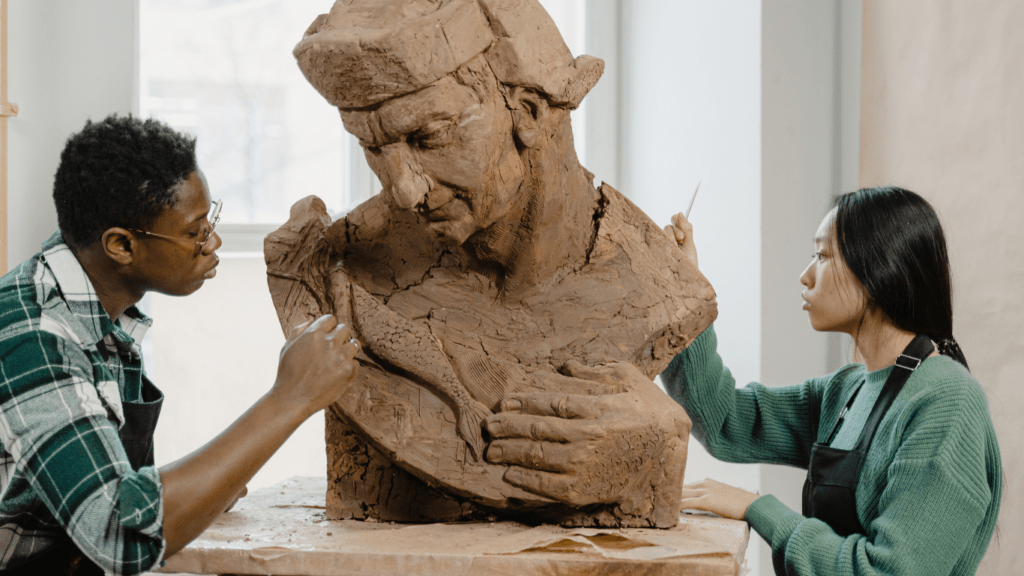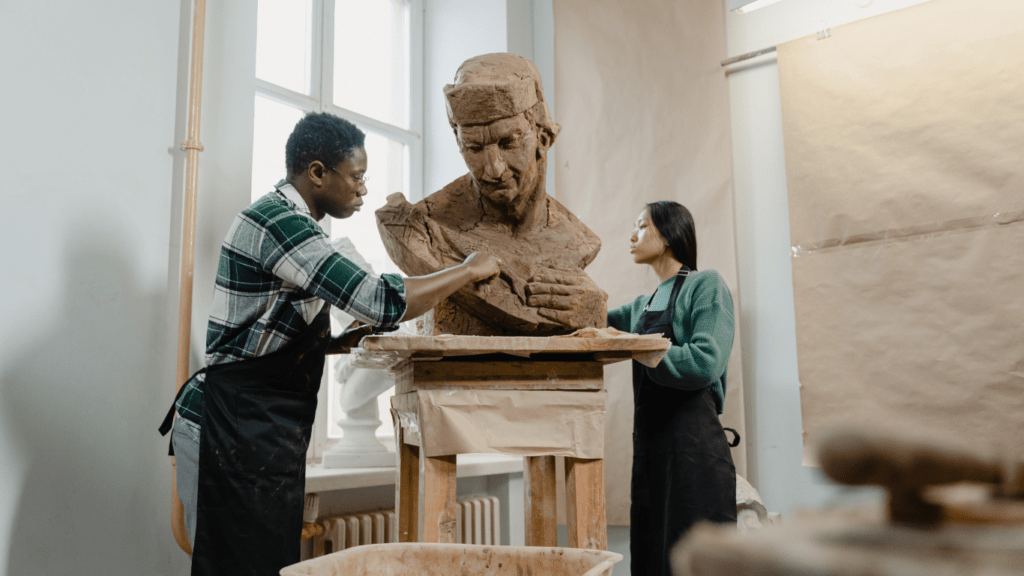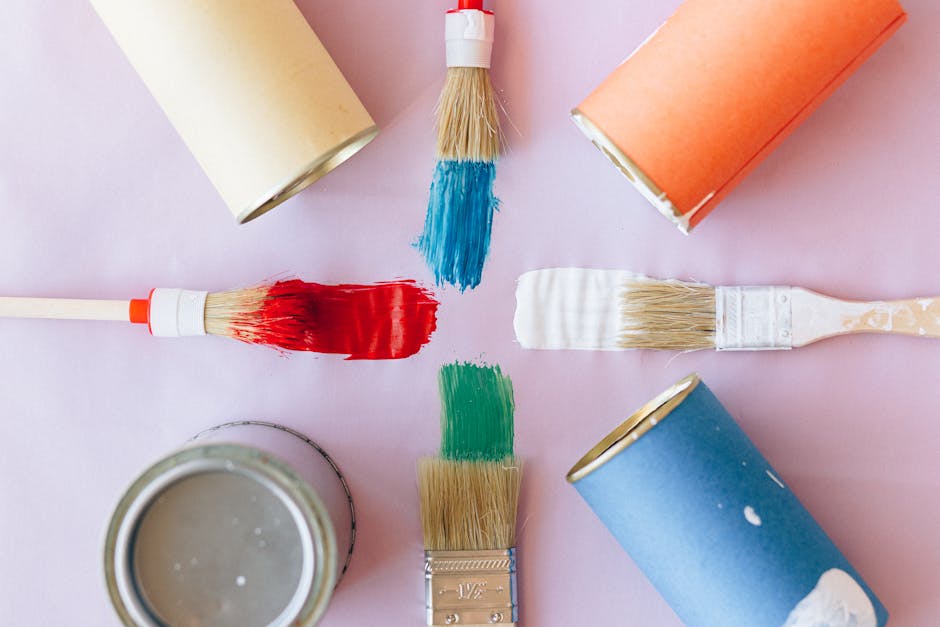Ever dreamed of bringing your artistic visions to life through sculpting? In this guide, I’ll show you how to unleash your creativity by crafting unique sculptures using clay and found objects. Sculpting is not just about molding shapes; it’s a way to express your imagination in three-dimensional form.
With the versatility of clay and the charm of found objects, you can blend textures, colors, and shapes to construct one-of-a-kind pieces that reflect your artistic flair. This hands-on approach to sculpting allows you to infuse personal stories and emotions into your creations, making each piece a reflection of your inner world.
Exploring the Basics of Clay Sculpture
Sculpting with clay is a versatile and rewarding medium that allows me to bring my creative ideas to life in three-dimensional form. Understanding the various types of clay is crucial for successful sculpting endeavors.
Understanding Different Types of Clay
There are several types of clay available for sculpting, each with its unique properties. For example, earthenware clay is ideal for beginners due to its low firing temperature, making it easier to work with and more forgiving of mistakes. On the other hand, stoneware clay is excellent for creating durable sculptures that can withstand higher firing temperatures.
Tools Needed for Clay Sculpting
To embark on a clay sculpting project, I require a set of essential tools to shape and mold the clay effectively. These tools include sculpting tools such as loop and ribbon tools for carving and shaping, a wire cutter for precision cuts, and a clay roller for flattening and smoothening the clay surface. Additionally, a sponge and water are essential for keeping the clay moist and workable during the sculpting process.
Incorporating Found Objects into Clay Art
When incorporating found objects into clay art, it’s crucial to select suitable items that can be seamlessly integrated into the clay sculptures. By carefully choosing objects that complement the theme or concept of the artwork, artists can enhance the visual appeal and storytelling of their creations.
Selecting Suitable Found Objects
In selecting suitable found objects, I recommend exploring various materials such as wood pieces, metal objects, textiles, or recycled items that align with the artistic vision. It’s essential to consider the texture, shape, and size of the objects to ensure they harmonize with the clay sculpture seamlessly. For instance, incorporating driftwood into a beach-themed sculpture can add a realistic touch and create a cohesive narrative within the artwork.
Techniques for Combining Objects with Clay
When combining objects with clay, I find it effective to use techniques such as embedding, attaching, or layering the found objects onto the clay surface. Embedding objects involves pressing them directly into the clay to become part of the sculpture, while attaching involves affixing the objects onto the clay using adhesive materials or by scoring and slipping the surfaces for a strong bond. Layering objects on top of the clay can add depth and dimension to the artwork, elevating its visual impact and creating a dynamic interaction between different elements.
By mastering the art of incorporating found objects into clay sculptures, artists can push the boundaries of traditional sculpting techniques and infuse their creations with a unique and captivating aesthetic appeal.
Crafting Your First Sculpture
Designing and Planning: When crafting your first sculpture, start by sketching out your ideas on paper. Consider the overall look and feel you want to achieve, as well as the incorporation of found objects. By planning ahead, you can ensure a cohesive and visually appealing design.
Step-by-Step Sculpting Process:
- Gathering Materials: Begin by collecting the necessary materials for your sculpture, including clay, found objects, sculpting tools, and any additional supplies you may need.
- Preparing the Clay: Knead the clay to make it more malleable and remove any air bubbles. This step is crucial for ensuring a smooth sculpting process and preventing cracks in your final piece.
- Shaping the Base: Start by creating the base of your sculpture using a solid foundation of clay. This will provide stability for the rest of your artwork.
- Incorporating Found Objects: Select found objects that align with your artistic vision and enhance the narrative of your sculpture. Carefully integrate these items into your clay artwork, considering texture, shape, and placement.
- Refining Details: Pay attention to the finer details of your sculpture, such as facial features, textures, and intricate designs. Use sculpting tools to add depth and dimension to your artwork.
- Baking or Curing: Once you’re satisfied with your sculpture, follow the instructions for baking or curing the clay to ensure it hardens properly. This step varies depending on the type of clay used.
- Finishing Touches: After the clay has hardened, you can apply paint, varnish, or other finishes to enhance the overall appearance of your sculpture. Be mindful of the materials used to preserve the integrity of your artwork.
By following these steps and unleashing your creativity, you can successfully craft your first sculpture using clay and found objects. Experiment with different techniques and materials to develop your unique artistic style and create captivating artworks.
Inspiration and Ideas for Your Sculptures
Themes and Concepts to Explore
- Nature: Draw inspiration from the beauty of the natural world. Consider incorporating elements like leaves, twigs, or shells into your sculptures to create organic and earthy compositions.
- Identity: Explore themes of identity and self-expression by integrating personal objects or symbols that hold significance to you. This can add a personal touch to your sculptures and convey a deeper message.
- Mythology: Dive into myths and legends for storytelling inspiration. Use found objects to represent mythical creatures or symbols that evoke a sense of wonder and enchantment in your sculptures.
- Sustainability: Embrace eco-friendly practices by incorporating recycled materials into your artworks. Transform discarded items into sculptural elements that reflect sustainability and environmental consciousness.
- “Eclectic Harmony” by Artist A: This sculpture combines clay figures with vintage keys and watch parts, symbolizing the interconnectedness of time and memories.
- “Whispers of the Forest” by Artist B: Inspired by nature, this sculpture features clay tree branches entwined with real feathers, evoking a sense of calmness and serenity.
- “Mythical Odyssey” by Artist C: A sculpture that blends clay sculptures of mythical creatures with ancient coins and trinkets, telling a tale of adventure and discovery.
- “Reclaimed Beauty” by Artist D: Utilizing recycled metal scraps and broken ceramics, this sculpture showcases the beauty of repurposed materials in art.
Caring for and Displaying Your Sculptures
When it comes to caring for and displaying your sculptures, there are key practices to ensure the longevity and visual impact of your art pieces. Consider the following tips for preserving and showcasing your creations effectively.
Best Practices for Preservation
To uphold the integrity of your sculptures, it’s essential to implement proper preservation techniques. Here are some best practices to keep your clay and found object sculptures in optimal condition:
- Dust Regularly: Dust can accumulate on sculptures over time, affecting their appearance. Use a soft brush or cloth to gently remove dust and keep your artwork clean.
- Avoid Sunlight: Direct sunlight exposure can cause fading and deterioration of clay sculptures. Display your artwork in areas away from direct sunlight to maintain its color and texture.
- Handle with Care: When moving or transporting your sculptures, handle them with care to prevent breakage or damage. Consider using padding or protective packaging for added safety.
- Moisture Control: Keep your sculptures in a dry environment to prevent moisture damage. Excessive humidity can soften clay and lead to mold growth, impacting the structural integrity of the artwork.
- Storage Solutions: If storing your sculptures, opt for a cool, dry place away from temperature fluctuations. Wrap delicate parts with acid-free tissue paper or bubble wrap to prevent scratches or chips.
Creative Display Ideas
Enhance the visual impact of your sculptures with creative and engaging display ideas that complement your artistic vision. Here are some innovative ways to showcase your clay and found object sculptures:
- Gallery Wall: Create a gallery wall featuring a collection of your sculptures to attract attention and create a cohesive display. Experiment with different arrangements and lighting to highlight each artwork effectively.
- Floating Shelves: Install floating shelves to display your sculptures at varying heights, adding depth and visual interest to your space. Mix and match different sizes and shapes for a dynamic presentation.
- Under Glass: Place your sculptures under glass domes or cloches to protect them from dust while adding a touch of elegance to your display. This method can also draw focus to intricate details and textures.
- Natural Elements: Incorporate natural elements like driftwood, rocks, or plants into your display to create a harmonious connection with your sculptures. The juxtaposition of organic materials can elevate the thematic elements of your artwork.
- Rotating Displays: Switch up your display periodically to keep your space fresh and showcase different perspectives of your sculptures. Experiment with seasonal themes or color schemes to create versatile and engaging displays.
By following these preservation practices and embracing creative display ideas, you can maintain the beauty of your sculptures and captivate viewers with thoughtfully curated presentations.



